SDM NEWS 2012
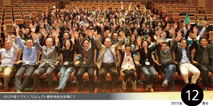 |
 Message from the Faculty Message from the Faculty2012 Ends with a Month for Scholars and Politicians to Really Run (Ken Victor Leonard Hijino, Associate Professor) In the month of shiwasu or "running" (a Japanese way of describing December, a time when monks are busy with home visitations), to the excitement of Japanese political scientists, a big event held only once in every several years is happening. The general election is on! |
With only ten days left until the election, I am as excited as if the World Cup, Christmas, and Olympics were all simultaneous events. The results of this election have numerous implications on many crucial issues. It is the first election after 3.11 (the Great East Japan Earthquake) and shows a high-flying formation of new parties and a record number of candidates. As such, here at SDM we ran quantitative comparative verification of the parties' manifestos and simulated election strategies for candidates in the special constituencies. Needless to say, most voters do not share the same level of excitement about politics. On the contrary, many people seem to have an increased distrust for the rapidly-changing campaign pledges and for the politicians who vertiginously break up and regroup. Many voters criticize the policies presented as being too vague, and they find it troublesome to choose from among so many parties. As political scientists we have a duty to analyze why the political party system became so unstable and why the campaign pledges are left unrealized. By so doing we shall identify the structure of issues so as to propose innovative solutions. Without a doubt the upcoming election will generate valuable data which aid political systems analysis of this kind. By capturing political dysfunction as a problem that pertains to the structure and function of its system design, we at Keio SDM would continue to deepen our knowledge with a view to redesigning the governing systems of Japan. Finally, I would like to take this opportunity to express my appreciation for your kind support to Keio SDM throughout the year. We look forward to your continued support in 2013. Have a Happy New Year! |
|
Laboratory Profile
Lab profiles do not appear in this issue. |
TOPICS
1. Introduction to Model-Driven System Development: An Intensive Course
2. Real-Time Communication with Astronaut Hoshide on the International Space Station (ISS)
3. Symposium Commemorating the Establishment of the Management Design Center
4. Completion of Project Manager Leadership Training
5. SDM Articles in Fuji Sankei Business-i.
6. Extension Lecture: The Future of Design and Management Vol. 2
7. Lecture by Associate Professor Ken Hijino & Keio SDM Information Session
8. The Know-How of Social Innovation: Seminar on Portfolio Program Management
9. Extension Lecture by Professor Stoewer: Space Applications--Utilizing Space
10.The Future of Dialogue and Design Vol. 6: The Future of Social Design
11.Completion of the Design Project 2012
12.Technical Entrepreneurship Lecture by Professor Duncan Moore
13.The Hiyoshi Research Portfolio and Hiyoshi 3.0
14.The Fifth Session of the Lecture Series on Space: "Utilizing Space: Future Design by Space Innovation"
|
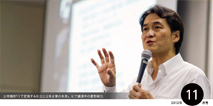 |
 Message from the Faculty Message from the FacultyThe Needs and Seeds-Oriented Approaches of Keio SDM (Shinichiro Haruyama, Professor) The Graduate School of System and Design Management (Keio SDM) carries out education and research in the areas of system thinking, design thinking, and management thinking. |
In the Design Project, one of our required subjects, we creatively practice combining design thinking and system thinking. Firstly we discover new needs by observing users' behaviors using design thinking and through the trial and error process of making prototypes. We then develop a new concept; and by using system thinking methods we establish and verify the concept as a system. The importance of a needs-oriented approach has long been universally recognized; and Keio SDM follows this trend. Nevertheless it goes without saying that resources and "seeds" are also essential for realizing new concepts. At Keio SDM we embrace ample resources and "seeds." In addition to the expertise of the faculty, our students, half of whom having had professional experience, bring their specialized knowledge, experiences, and networks to the table. Utilizing such fascinating resources, Keio SDM is committed to continuing its effort to design new markets. |
|
Laboratory Profile
Global Product Value Creation Research Laboratory
Professor |
TOPICS
1. Special Event by the Entrepreneur Laboratory: "Learn from the Entrepreneurial Experiences of Keio SDM Students and Alumni"
2. "Future of Dialogue and Design Vol.5: The Future of Localities and Tales"
3. The Second Keio Innovative Design School
4. The Extension Lecture: "Societal Changes with the Development of Information Technology and the Future of Japanese Companies"
5. The Seminar on "Front-Line Innovative System Design of the Monozukuri (manufacturing) and Kotozukuri (value creation) Industry"
6. The "Entrance to Home" Exhibition in Sapporo
|
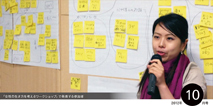 |
 Message from the Faculty Message from the FacultyPersons, Systems, and Boundaries (Hidekazu Nishimura, Professor) Systems have certain structures and act in accordance with requests and constraints. In most cases people are involved in the actions. |
Conventional thought concerning systems, however, may lead people to mistakenly regard systems as something cold. On the contrary, systems engage human beings. System design thus should be based on the fact that people are involved.
It is extremely difficult to take into account human thoughts and behaviors. Yet, when designing and managing systems, we need to keep in mind that people are involved. In order to do so, it is crucial to imagine how the system would be used; and it is always better to have professionals from diverse fields put their heads together rather than to leave the thinking to one lone expert.
Such a process requires professionals to go beyond the "boundaries" and think outside the box. It is also essential to graphically illustrate what is in mind. The Graduate School of System Design and Management (Keio SDM) provides an ideal environment in which all of these things can be put into practice. |
|
Laboratory Profile
Lab profiles do not appear in this issue. |
TOPICS
1. Fall 2012 Commencement and Entrance Ceremonies
2. Fall 2012 Intensive Course: "Medical System and Research Development of Medication 3" in Washington D.C.
3. The Fourth Session of the Extension Lecture Series on Space, "Invest in Space: System Design for Space Business"
4. Nikkei Business Daily Features Vocal Guidance Service for Visually-Impaired Persons Developed by Professor Haruyama's Team
5. Nakajima (3rd year doctoral course)'s Group Receives the Best Paper Award from the Technology and Society Division of Japan Society of Mechanical Engineers
6. Extension Lecture "Future of Design and Management"
7. "Dynamic & Design Conference 2012" Sponsored by the Dynamics, Measurement, and Control Division of the Japan Society of Mechanical Engineers
8. Keio Innovative Design School Workshop: "Value Identification & Modeling"
9. "Workshop to Reflect on Women's Way of Life"
10.Workshop on Post Design-Thinking and Post System-Thinking
|
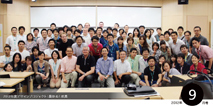 |
 Message from the Faculty Message from the FacultyBuilding Sustainable Society through Nurturing International Leaders (Masaru Nakano, Professor) With a view to building sustainable society, Japan's economic and social system needs reform which addresses the issues of declining birthrate and aging population, national finance, and rebuilding energy policies. |
Unfortunately it seems that building national consensus and taking timely actions are not the strength of Japanese politicians. To compound matters, there are signs that Japan's manufacturing industry is losing its international competitiveness. Although the strong yen is thought to be the underlying cause, it is also true that the industry is in desperate need of leaders who have an international outlook and are capable of accelerating the needed reform by thinking beyond Japan's past successes. At the Graduate School of System Design and Management (Keio SDM), students learn a number of methods which deal with social, technological, and managerial systems in a comprehensive and systematic manner. These methods allow multiple stakeholders to organize and share issues systematically, to seek out and evaluate solutions, and to make optimal decisions. Keio SDM offers an international environment: one third of Keio SDM's full-time students take part in the exchange program at prestigious universities in the U.S. and Europe, while twice as many students from overseas study at Keio SDM as exchange students. Our hope is to produce many international leaders who are capable of building a sustainable society. |
|
Laboratory Profile
Strategic Systems Design Laboratory
Associate Professor |
TOPICS
1. Keio SDM Concludes Extension Lecture: "Overhead View of Modern Software Engineering"
2. Design Project 2012
3. Information Session on Keio SDM
4. Keio SDM Holds Innovative Design Workshop: "SHIBUYA 3.0--Utilization of Future Shibuya"
5. AGRI Laboratory Visits Tokachi (Represented by Project Professor Mikako Hayashi)
|
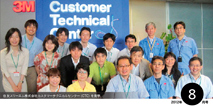 |
 Message from the Faculty Message from the FacultyContributing a "Uniquely Japanese" Team Spirit and Altruism to the World (Tetsuya Toma, Associate Professor) Late-summer greetings from the Graduate School of System and Design Management (Keio SDM)! A long spell of hot weather is finally coming to an end. In spite of the heat, we put a spirited effort into a variety of activities at Keio SDM, which we are happy to share with you in this issue. |
While there are growing concerns that Japanese businesses are loosing their international competitiveness, Japanese athletes performed outstandingly at the London Olympics, demonstrating the uniqueness of Japanese team work. Unlike businesses that seek short-term profitability, sports aim for long-term growth, as do education and research. The emphasis in sports is more on national and social-interests than on individual benefits. As Japanese society values altruism, I believe it is possible for the business world to pursue an alternative path by incorporating 'uniquely Japanese' team work and cooperation. Following the Great East Japan Earthquake of last year, Japan received a great deal of support from overseas. This can be viewed as a sign that Japan has been successful in building long-term credibility through many years of international aid and other altruistic activities. Dreaming to see the day when Japan contributes to the world by advancing in a uniquely Japanese way, Keio SDM will strive each day to continue its endeavor. |
|
Laboratory Profile
Lab profiles do not appear in this issue.
|
TOPICS
1. Intensive Lectures by Associate Professor Rashmi Jain
2. Lecture Series on Space--Associated with Real-Time Communication Event with Astronaut Hoshide
3. Keio SDM Runs Booth at PMI Japan Forum 2012
4. Visit to Sumitomo 3M, Ltd. and Leadership Workshop
5. SDM Research Institute Holds Future Session: "Future of Dialogue and Design"
6. Keio SDM Holds Extension Lecture: "What is System Thinking for Editing?"
7. AGRI Laboratory Conducts Interviews at Suga Natural Farm in Saitama
8. Exam Preparation Course for Project Management Professional (PMP) ®
9. Special Session of Japan Society for Medical Education (JSME) Utilizes Keio's CDF Room
10.Keio SDM Extension Lecture: "Emerging Future of Japanese-Style System--Paradigm Shift in Cool Japan Strategies"
11.Examination of Master's Thesis
|
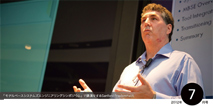 |
 Message from the Faculty Message from the FacultyYukichi Fukuzawa's Studies, Anew (Ryuichi Teshima Professor) Life is full of unexpected surprises. For me the encounter with the Graduate School of System Design and Management (Keio SDM) was truly one of them. |
When I was finally relieved of the extremely busy post as Chief of NHK's Washington Bureau, Keio's newly established Graduate School approached me. I declined the offer at first as I was planning to dedicate myself to writing from then on. After listening carefully to the description of its concept, however, it became hard to resist the idea of joining Keio SDM. If the Honorable Yukichi Fukuzawa were to establish a new school now after one hundred and fifty years, I think it would be Keio SDM. Through the Fukushima nuclear disaster of the spring of last year we witnessed ways in which the leaders of large organizations continued to wander about without making bold decisions. To me this reaffirmed the importance of a graduate school which can draw on all possible insights, from the humanities and from science, to deal with the large systems of today. Foreign and security policy is my area of expertise, and I am facing various challenges that arise in today's society from the angle of intelligence. Together with those who are a part of Keio SDM, the endeavor of facing new challenges continues--to find renewed solutions to the issues arising in contemporary Japan. |
|
Laboratory Profile
Decentralization/Regionalization Laboratory
Associate Professor
Professor |
TOPICS
1. SE Center Holds Model-Based Systems Engineering Symposium and Special Lecture on Model-Based Systems Engineering Methodology
2. Location Business Japan 2012
3. Keio SDM Participates in International Symposium: "CESUN 2012"
4. Keio SDM Holds Nikkei-Supported Environmental Symposium: "Potential of Geothermal Energy"
5. Nikkei Monozukuri's Special Site, "Compass for Value Creation," Features Professor Nishimura's Lecture at 3D EXPERIENCE Forum
6. Activities of Mr. Kanke and Others Featured in "Tohoku Reconstruction Newspaper"
|
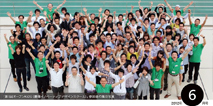 |
 Message from the Faculty Message from the FacultyParadigm Shift and Role of Keio SDM (Kenichi Takano Professor) Many people probably feel that the landscape of the world looks completely different after the earthquake of March 11, 2011. |
Although it appears that the context of the times in a larger sense remains consistent, the earthquake has indeed changed many people's values, thereby bringing about a paradigm shift throughout society. Nevertheless, we cannot afford the luxury of wallowing in the chaos. The global economy, just as it was recovering from the aftermath of the Lehman Brothers' debacle, is now under threat due to the financial crisis in Europe. It is not so difficult to imagine what kind of situation would arise if people throughout the world became too introspective, merely looking after themselves. The mission of the Graduate School of System Design and Management of Keio University (Keio SDM) is to educate people who can design the future with clear vision even under circumstances which are full of uncertainty and instability. With the right abilities and foresight it is always possible to turn difficult situations into opportunities. Over years I have been evaluating climate and culture of different companies, both inside and outside Japan, with an aim to probe the safety-conscious mind-set of Japanese companies. Through this work I have observed that the strength of Japanese companies is found in cooperation and harmony. This is an important quality not only for companies but also for society at large. It is about acknowledging shared values, thereby gradually broadening the supporter base. Even while being passive, one can build a base of trust and agreement by widening the range of values that one is able to accept. At Keio SDM we are pursuing unique methodologies for consensus-building that can be used both within enterprises and in the greater society. |
|
Laboratory Profile
Systems Engineering Center
Professor |
TOPICS
1. Report on APCOSE
2. Report on "Open SDM"
3. The First Keio Innovative Design School, "Open KiDS"
4. Event Using Next-Generation Content at Aore Nagaoka
5. Keio SDM Introduced as Exemplary Management Education at JICA's CIO Training on May 7
6. Toma Laboratory Visits Fujitsu Laboratories on May 14
7. Ogi and Toma Laboratories Capture Annular Solar Eclipse on May 21
8. Associate Professor Naohiko Kohtake and Mr. Madoka Nakajima Present at Nikkei Electronics Seminar
9. Research Project on System Design and Management for Next-Generation Smart City
10.Keio SDM Contributes Article to Book, "Creative Community Design"
|
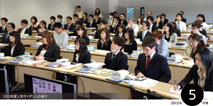 |
 Message from the Faculty Message from the FacultyWith an Eye toward a Truly Overarching and Integrated Academic Discipline (Seiko Shirasaka, Associate Professor) Since its foundation, the Graduate School of System Design and Management (SDM) has been striving to establish an academic discipline which deals with various systems, from technological to social, in a unified manner. |
As no such academic discipline existed before, we refer to it as "System Design and Management Studies." Since 2008 I have been taking part in the endeavor of establishing System Design and Management Studies while gaining new knowledge through various SDM classes, building on my expertise in technological system development. Although I have always believed in the possibility of establishing System Design and Management Studies since the foundation of SDM, I did not expect it to be an easy task. After a number of activities last academic year, however, I felt strongly that it finally came to life. Now, I would like this academic year to be a year of practicing the academic discipline which finally took shape last year. This year I want to apply System Design and Management Studies to real-life problems and achieve results. To that end, I would appreciate the continued cooperation of the SDM faculty, researchers, students, graduates, and those who share and support our vision. |
|
Laboratory Profile
Space System Laboratory
Associate Professor
Associate Professor |
TOPICS
1. Orientation and Introductory Camp for Academic Year 2012
2. SDM Poster Exchange
3. Returning SDM Study Abroad Students' Report and Briefing on the Exchange Program
4. Special Lecture by Dr. Fredrik Hacklin, Swiss Federal Institute of Technology (ETH)
5. Extension Lecture by Professor Ryuichi Teshima
6. Symposium Commemorating the Foundation of the Systems Engineering Center, SDM Research Institute
7. SDM Extension Lecture Series, "Overhead View of Modern Software Engineering"
8. The School of Medicine Introduces High-Definition Large-Screen High-Speed Optical Transmission System
|
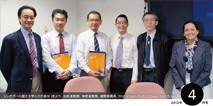 |
 Message from the Faculty Message from the FacultyThoughts on Safety (Shoichi Sasaki, Professor) The cherry trees bloomed somewhat later than usual this year. Around this time last year we were struck by such traumatic and catastrophic events that it is difficult to recall when the cherry trees bloomed. |
A once-in-a-millennium-earthquake was followed by tsunamis and the meltdown at the Fukushima Daiichi Nuclear Power Plant ― leaving us to ask, "What is it that this series of disasters is telling us?" I feel it is necessary to reflect on these things once again. I used to work for an automobile manufacturing company: a place where we would get more than an earful concerning safety. I must admit, however, that they did provide some practical education concerning safety. What I remember the most is the "hazard prediction test" also known as KYT or ACT. It consists of (1) predicting hazardous situations; (2) evaluating severity and frequency of occurrence; and (3) self-evaluating countermeasures. Submitting the test results of the KYT/ACT was a prerequisite for launching any new experiment. For a person like me, who was eager to collect data as quickly as possible, this system seemed redundant and merely a disruption to work. Looking back, however, I now see that it was indeed a necessary step to ensure the safety of the multiple stakeholders engaged in the experiments. At the Graduate School of System Design and Management (SDM) we also deal with the issue of hazard predictions; but our version, as it deals with society as a whole, differs from that of companies in terms of the scale and impact of countermeasures. Judging from the disasters of last year, I must say that the level of ability to predict hazardous situations and their frequency was extremely inadequate. It is said that the scale of an earthquake and its frequency of occurrence are generally exponentially distributed. This means that eventually there will be an earthquake of unexpected intensity, though it might be thousands of years from now. We then need to acknowledge that such a cataclysm is sure to occur in the span of some thousands of years. If the recovery takes 100,000 years, we need a system designed to take into account a time period that great. Consider the system that was designed in such a way that the once-in-a-millennium-earthquake causes the land to be useless for the next 100,000 years. A system designed as such is nowhere near being a practical option when considering the actual availability of land. In normal life, it is extremely difficult to base our actions on the worst predictable situation. Unless we do that, however, it is like relying on pure luck to continue living. To make the matter more complicated, the time constant of human memories is much shorter than that of the earth. If we do not experience any hazard for thirty years, we easily forget that the area was once affected. We may even begin to hold an unfounded belief that there will be no catastrophic events for all eternity. Safety is like rowing upstream in a slow-moving river. The moment we stop rowing, we begin to be swept downstream; thus we should be prepared to continue rowing. With this in mind, I hope we will prevent the kind of situation for which young people might curse us a thousand years from now. |
|
Laboratory Profile
Innovative Design Center
Professor |
TOPICS
1. Extension Lecture on "Dialogue for Design Thinkers"
2. Special Lecture at "Shizuoka Cancer Conference 2011" by Associate Professor Toma
3. AGRI (Agricultural) Laboratory Publishes Its Activity Report, "AGRILAB REPORT 2011-2012"
4. Tele-Immersion Technology Workshop
5. SDM Team Wins "Interactive Audience Award" at Interaction 2012
6. Report on "First Japan Symposium for Promotion of Academic Exchanges"
7. Update on the Coordination Efforts for International Collaboration with National University of Singapore and University of Adelaide
8. Outstanding Lecture Award at Annual Conference of SI, SICE
9. Degrees Awarded and Doctoral Thesis Titles
|
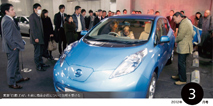 |
 Message from the Faculty Message from the FacultyNO RE-DESIGN WITHOUT SDM ( Associate Professor Naohiko Kohtake) One year has passed since the Great East Japan Earthquake. Recovery and reconstruction from that natural disaster will involve managing large-scale complex systems, a specialty of our Graduate School of System Design and Management (SDM). Throughout the year since the quake, we have been deeply involved in reconstruction efforts. |
Starting as early as the day after the disaster, many SDM students, graduates, faculty and staff rushed to the devastated area to engage in various initiatives and events. These include: "Future energy system design for overcoming earthquake disasters", "After the East Japan Earthquake: Reconstruction Support and Social Innovation", and "Fukushima Future Meeting" and "Avert Blackout Project". SDM students along with graduates in the private and public sector as well as non-profit organizations played important roles in reconstruction using the skills, tools, and knowledge they mastered in SDM. SDM seeks to contribute even more than this valuable work of quake reconstruction. SDM's mission and value is to develop innovative solutions and then actualizing them in implemented systems. This spring SDM starts a new design project to meet this challenge and generate value globally via various programs. I want to improve SDM's value by producing greater-than-expected outcomes through such projects. This March, 58 master students who were mostly first year students at the time of the disaster, will be graduating. Although this is a small number - less than 100 students per year - their impact will be larger than one might expect because they are trained in systems thinking at SDM. I am keenly aware of the difficulty to continue to work together with students who spend a few years at this school on projects contributing to society. Yet thanks to the enthusiasm of our students for the wide-ranging powers of the system tools they learn at SDM and apply in SDM projects, our students have already achieved much after graduation. I thank this year's graduates of SDM for realizing the Keio University principle of "half-student/half-teacher", where both students and teachers teach and learn from each other. We wish this year's graduates the very best in their future careers. |
|
Laboratory Profile
System Design Methodology Laboratory
Associate Professor |
TOPICS
1. Workshop "Understand product planning of the world's first mass-produced electric car 'Nissan LEAF'"
2. AY 2011 study abroad programs (one semester)
3. SDM Open Lecture "How to publish your own book"
4. Release of aitetter, android smartphone application, to share information on indoor congestion degrees
5. SDM holds workshop "Protect life and space - Think about future transportation, energy and space"
6. Research on natural farming at Keio SDM featured in "Farmers save the earth"
|
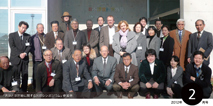 |
 Message from the Faculty Message from the Faculty"Thinking with your hands" in system design (Tetsuro Ogi, Professor) Since its inception, one of the key ideas behind education and research at the Graduate School of System Design and Management (SDM) has been "see the trees and also the forest." |
In actual practice, however, it is extraordinarily difficult to do this in system design. Understanding the details of the trees means using your hands, and understanding the forest means using your brain and your hands. The philosopher Immanuel Kant once said that the hands are a second brain. We use our hands to collect data, make drawings, build prototypes, give form to our ideas, and view objects and phenomena objectively. This second brain has, thanks to the advances of science, acquired new tools and expanded its functions. Getting our hands on the compass and ruler allowed human beings to work with geometrical concepts; learning programming and IT skills allows us to use computers as extensions of our own brains. Today, smartphones and tablets continue to expand the functions of our hands. The practice of system design continues to evolve. |
|
Laboratory Profile
Comparative Political Systems Laboratory
Associate Professor |
TOPICS
1. Report presented by Delft University of Technology exchange student
2. AY2011 study abroad programs (short-term)
3. PhD Dissertation Jury and posthumous doctoral thesis
4. Master's Thesis Jury
5. VSE Center sponsors process improvement seminar
6. "Training Tour for Young People" proposed by AGRI laboratory students comes to life in Mogami, Yamagata
7. SDM Research Institute cosponsors "International Symposium on Yoshiwara and Ukiyoe"
|
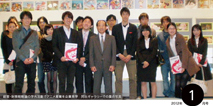 |
 Message from the Director and Dean Message from the Director and DeanGiant steps for SDM (Takashi Maeno, Director, SDM Research Institute Dean) Happy New Year! I look forward to another year of working with you and enjoying your insights and guidance. |
In 2011, Japan experienced a major earthquake and electric power crisis; the world saw financial crisis, competitive devaluation, armed conflict, and widening gaps between the rich and poor. These developments are in some senses all interrelated, and provide a painful illustration of just how difficult it is to find solutions that are optimized for the whole in a time when systems in Japan and the world are growing larger and more complex. Personally, I also mourn the loss of that most respected innovator, Mr. Steve Jobs. If anything, it was a year that demonstrated the need for the Graduate School of System Design and Management (SDM) and its approach of viewing phenomena as systems and designing innovative solutions for them. This year, SDM will need to articulate its concepts even more clearly, encouraging teamwork among a diverse group of faculty, students, and researchers to produce world-class research results and to foster human resources that match the world's needs. The Dean has always authored this section in SDM NEWS, but this year we will be asking twelve full-time supervising professors to share their visions and aspirations for SDM. For this January issue, I join them in sharing a brief glimpse of what each of us hopes to accomplish. I look forward to great things from SDM as it uses its diversity to contribute to a better society. |
|
Laboratory Profile
Lab profiles do not appear in this issue.
|
TOPICS
"Aspirations for 2012" (SDM full-time supervising professors)
1. SDM at Peking University's Study Abroad Fair
2. Students tour a leading anime production company
3. Intensive lecture on "entrepreneurship" by Professor Duncan Moore
4. Mini-projects in project management
5. Intensive lecture by Associate Professor Rashmi Jain
6. Reports from students returning from abroad
7. Science education dome animation now showing at National Museum of the Emerging Science and Innovation
8. "Digital 3D Ukiyoe" displayed at the Visual Media EXPO
9. Event report: 2011.12.11 "Fukushima Future Meeting"
10.Voice navigation system for the visually impaired
11.Article on roundtable discussion attended by Professor Takano published in the journal of the Engineering Advancement Association of Japan
Notice : Award received
|





